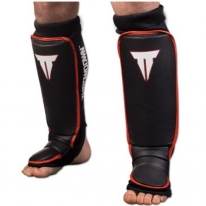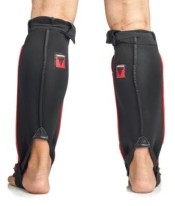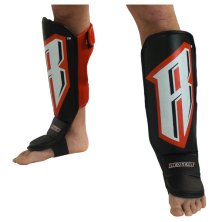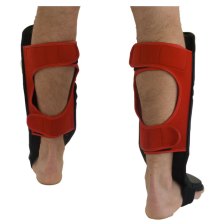Choosing the right shinguard can be quite confusing if you don’t have much experience in the sport. There are a lot of companies out there that make good quality products to fit any budget but they don’t always describe the recommended use and it will come down to your decision. With this article our goal is to help buyers choose a pair shinguards that will meet their needs.
One of the most important questions you should ask yourself is, “What do I need the shinguard for?” For stand up? (stand up examples are Muay Thai, Kick Boxing) Or for Grappling (MMA or Vale Tudo)? This question may seem pointless but figuring out the style of shin guard you need can save you a lot of time and effort.
Below we will breakdown the different types of shinguards on the market. We will briefly describe the benefits of the different styles and how it can affect performance on your specific fighting style.
Types of Shin Guards
There are two types of shin guards that are common amongst fighters. Those for stand-up fighting or those for grappling. Each style has it’s own specific features that either help or hinder depending on the type of training.
Stand-up Shinguards
Lets begin with stand-up. As the name suggests these types of guards are mainly used for fighting styles that do not require ground work, such as kickboxing and Muay Thai. These shinguards come with either a velcro enclosure or a hook and loop system that keep them in place while striking. Over all they are thicker in padding and usually more rigid around the shin and foot area for more protection and does not have much foot flexibility (one of the reason they aren’t very useful for ground work). Some potential issues with using these shin guards for MMA is that they will be more uncomfortable to wear while doing ground work and may injure your sparring partner with the velcro closure and harder materials used. If you are on a budget we would suggest looking into synthetic materials which are usually more economical but sometimes can be less durable. If you are looking for top of the line protection look into thai brands that use top of the line materials (not necessarily leather) and they will last on average 2-3 times longer. Prices Range from $40 example DragonDo – $120 example Hayabusa shin guards.
More Example of Stand-up Shinguards: Venum “Challenger” Shinguards, Fairtex Standup Shingurads, Throwdown stand up shinguards.
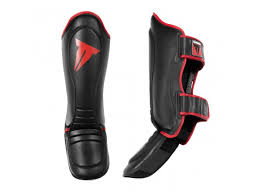
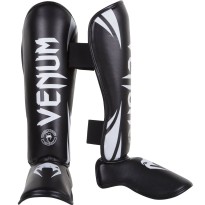
Grappling Shinguard’s
Grappling shinguard are another style that are mainly used in MMA training, where ground work is vital. They are very different from the stand-ups, they normally come with a neoprene sleeve and velcro enclosure that surrounds your shin and calves, similar to a long sock that you slip on and fits tight. The padding material around the foot and shin area is also thinner and more flexible allowing the user more freedom of motion and the ability to bend the foot backwards while grappling. These style of shinguard’s can also be used for muay thai and kickboxing but they are better known for grappling.
A common issue that many fighters have with this type of in-step shin guard is that its harder to remove after training because the sweat on the neoprene acts like a suction cup and adheres to the skin making it harder to remove specially after long training sessions. To avoid this issue look for a MMA shinguards with hook and look closures in-stead of neoprene sleeve. If you are on a budget be sure to look into the synthetic leather. Prices usually range from $30 for basic Venum instep shinguard to $120 for a top of the line Hayabusa MMA Shinguard.
More Example of In-step mma Shinguards: Throwdown Grappling Shinguards or Revgear Leather MMA Shinguards.
Thanks for reading this article. Please let us know if you have any questions from this article or any suggestions for another topic to do in the future.
